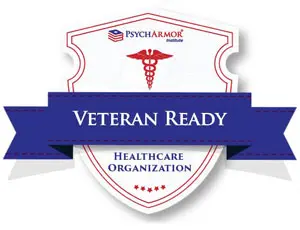How to Avoid Burnout in Recovery
Maintaining good health isn’t automatic. It requires diligent effort. Most of the time, especially when choosing sobriety, your health matters so much that you make it a priority—this mentality makes it easier to follow a daily recovery practice. But just like other chronic illnesses, there are moments when managing your condition every day is overwhelming. So here are some tips for avoiding burnout in recovery.
Dealing With a Chronic Disease
Someone with type 1 diabetes, a chronic condition, has to be diligent about their daily care, which always involves monitoring blood glucose levels, administering insulin, and planning meals with appropriate carbohydrates. But they also need to stay connected with their healthcare team and follow a personalized care plan to maintain optimum wellness.
Alcohol use disorder (AUD) and substance use disorder (SUD) are also considered chronic illnesses because, according to addiction medical specialists, while these conditions can be effectively treated, they can’t be cured. Successful disease recovery requires day-to-day attention, involving a range of emotional, mental, and physical factors.
The National Library of Medicine’s Medline Plus points out that “it takes a lot of energy to manage your chronic illness every day. Sometimes, this can affect your outlook and mood. Sometimes you may feel very alone. This is particularly true during times when your illness is harder to manage.”
So, similar to a person with diabetes, an individual managing AUD or SUD every day also has a few non-negotiable actions that require ongoing effort and commitment including, but not limited to:
- Avoiding alcohol and substances. To do this well, there must be a conscious decision every day to avoid triggers and situations that might lead to substance use.
- Attending treatment and support activities. Regular participation in treatment and support activities is crucial for managing substance use disorder. This might involve attending therapy sessions, group counseling, or 12-step meetings like Alcoholics Anonymous (AA) or Narcotics Anonymous (NA).
- Practicing self-care and relapse prevention. This includes getting enough sleep, eating a balanced diet, staying physically active, and managing stress.
But it’s only natural to feel negative, depressed, and even angry that you have to deal with all of this day in and day out. Sometimes, you might resent needing to put in so much effort, or even wonder what the point of it all might be. These are common indicators of recovery burnout.
Is Burnout Just Stress?
Well, it depends. Henry Ford Health indicates that the primary difference between stress and burnout is one feels troublesome but temporary, while the other feels hopeless and never-ending. However, the two conditions can overlap. Here’s more detail from the medical center, which we provide verbatim:
Stress:
- You put in too much effort
- You feel emotions more strongly
- You feel hyperactive and anxious
- You have less energy
- It takes a physical toll
Burnout:
- It’s hard to put in any effort
- Your emotions feel blunted
- You feel drained and helpless
- You have less motivation
It’s critical to be honest with yourself about how you feel and take progressive action to address recovery burnout. This helps you become more aware of what factors threaten your sobriety and reset before things get out of hand.
How to Avoid Recovery Burnout
If you’re someone who believes in the 12-Step tenant “one day at a time,” then you understand the mental and emotional agility necessary to maintain sobriety. Fortunately, there are a few key pointers that can help you stay the course and avoid relapse.
- Reinforce your sobriety purpose. When we’re teetering on the edge of stress and burnout, we can quickly lose sight of our intentions. Make time to journal about all you’ve achieved in sobriety and why it matters, and use this to reinforce your sense of purpose.
- Examine triggers and stressors. We all have ‘em, but they’re easy to forget in times of high stress or uneven emotional states. Developing a relapse prevention plan and having a support network in place can provide guidance and assistance during challenging moments.
- Revisit—or revise—your coping strategies. These may include different forms of therapy; seeking support from friends, family, or mutual aid groups; and engaging in alternative activities that can help distract from cravings and reduce the risk of relapse.
- Stay focused on overall health. If you can’t run five miles, walk around the block. Instead of doom-scrolling, go to bed early with a good book. Allow one “cheat” meal weekly, then return to a whole-foods eating plan. Stay steady with these and other small wellness hacks until you can return to your usual health goals.
Remember: while your emotions are unique, you’re not alone in feeling burnout occasionally. As a point of comparison, a T1 International survey of people with type 1 diabetes indicates that “55 percent experience burnout much or all of the time.” Of those, people feel worse when they don’t take care of themselves in ways they know will work—and when they don’t connect with people who can help.
Quality Aftercare at Seabrook
At each of Seabrook’s four New Jersey locations, relapse prevention is a primary component of our clients’ continuum of care plans. Our comprehensive alumni services program includes local contacts, the CaredFor app, and regular staff follow-up, especially in the first year of recovery. We ensure you have all the tools you need to maintain long-term recovery health.




